Stuck nut often becomes a rather unpleasant problem for a home craftsman. What tricks you don't have to go to to unscrew it! However, many people use one or two familiar ways to deal with the problem. Today we will try to consider several options, of which, perhaps, some will be easier for our dear reader. So let's get started.
Read in the article
- 1 What are the options to unscrew the stuck nut
- 2 Mechanical impact on the nut
- 3 Physical properties of metals and their use
- 4 Chemicals as helpers in the fight against rust and scale
- 5 How effective is the help of compounds such as WD-40
- 6 Other ways when the above do not work
- 7 Let's sum up
What are the options to unscrew the stuck nut
Methods for unscrewing the nut can be divided into three modes of action:
- Mechanical. It is clear that to unscrew it, it is necessary to apply force using a lever, or destroy the oxide formed on the thread by shock action. This also includes the option using a chisel and a hammer.
- Physical. We use the properties of the metal to expand and contract under the influence of temperature differences.
- Chemical. We are talking about the use of various acids.
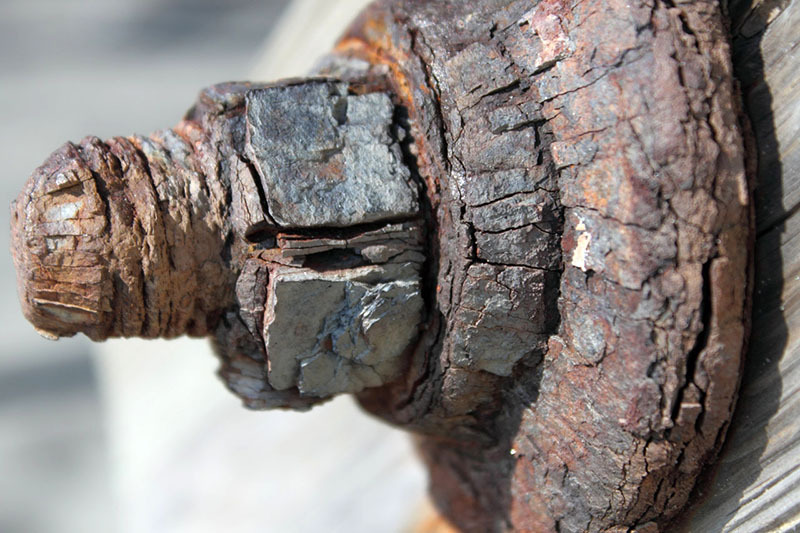
Let's try to analyze the methods in more detail.
Mechanical impact on the nut
It happens that it is enough to apply force to unscrew the nut. However, this is fraught with the breakdown of the edges, which means that it will be more optimal to use not an open-end wrench, but a box or socket wrench. If the nut does not give in, it is worth trying to twist it a little and only then unscrew it.
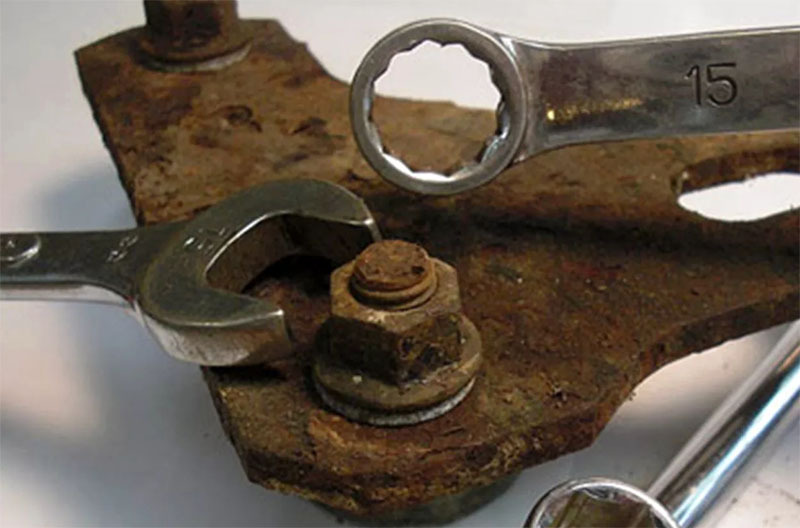
It is also possible to hit the nut several times with a hammer, which will lead to the destruction of the oxide. If the edges have already been torn off, then you can put a chisel on the nut and use the same hammer to try to turn it. The shock effect is much stronger than the traction effect; moreover, the oxide is destroyed again. This option is much easier than grooving the nut for a smaller size with face restoration.
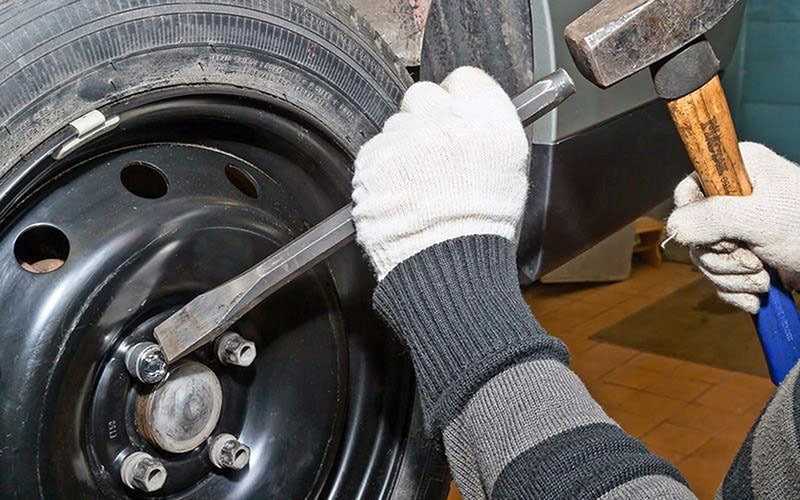
Physical properties of metals and their use
In order to unscrew the nut, it can be heated with a gas burner. It is worth noting here that the heating of the nut should be much stronger than that of the studs or bolts. And here again the destruction of the oxide takes place, but already from a high temperature. It burns out, as well as various dirt trapped in the thread. The problem with this method is the need to use an open flame, which is not always appropriate.

The same method includes the soaking of rust and oxides using diesel fuel or various "liquid keys", as well as the application of lubricants. Reducing the friction force plays a very important role here.
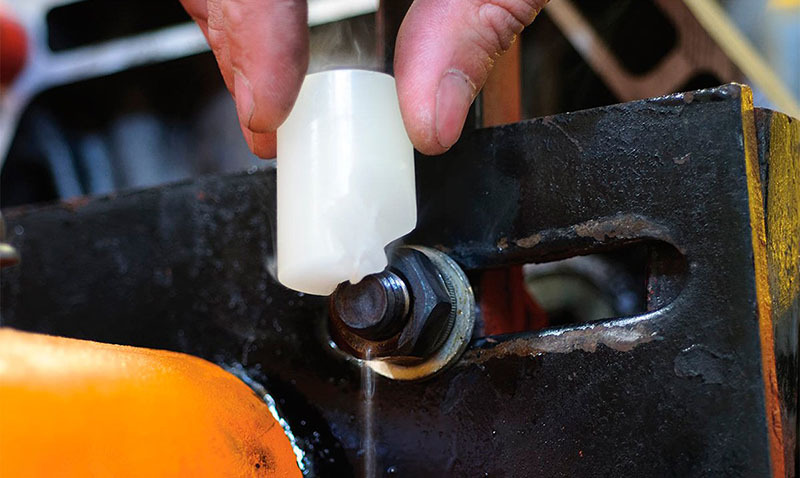
Chemicals as helpers in the fight against rust and scale
This option is quite powerful. Under the influence of acids, all deposits are destroyed, after which nothing interferes with unscrewing the nut. Most preferred here are hydrochloric, sulfuric or phosphoric acid. Less commonly, lemon or vinegar is used.

How effective is the help of compounds such as WD-40
Such compounds are widely used when loosening rusted or stuck nuts. However, it should be understood that they are only able to help in some cases. If rust old, it is unlikely that it will be possible to get by with such a composition. We'll have to think about a more aggressive impact. As for the knots prone to sticking, but often unscrewed, here the WD-40 is beyond competition.
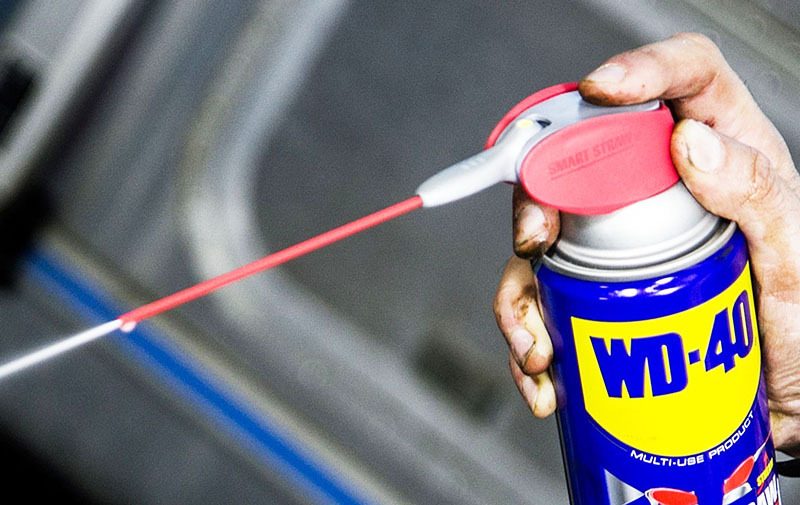
Other ways when the above do not work
A situation may arise when none of the above methods will work. In this case, all that remains is to remove the nut or bolt. And here the angle grinder comes into play (Bulgarian), a hacksaw for metal. There are also many nuances in such work. Its stroke will depend on whether there is a need to preserve the thread on the bolt or stud. Sometimes you have to act with a drill, drilling a bolt. But here, naturally, the volume of work increases significantly.
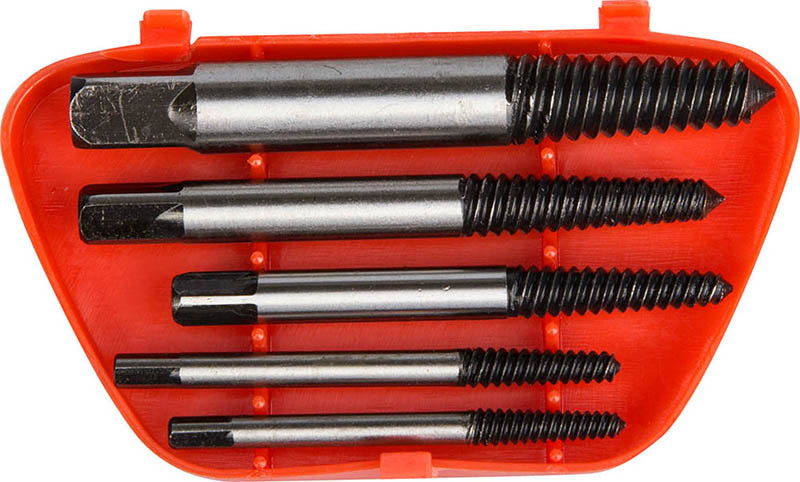
Let's sum up
A stuck nut is, of course, unpleasant, but not fatal. With the right approach, more often than not, extreme measures can be avoided. However, in such work, as in any repair, one should start with the simplest thing - sprinkle with WD-40, moisten with diesel fuel, lubricate with paraffin. And only when the simplest methods have been tried, you can proceed to the use of "heavy artillery". As for the various compounds that corrode rust and scale, now they are produced in huge quantities - they are dazzling from the names. But the components are almost identical for all. Therefore, it is worth considering whether it is worth overpaying.
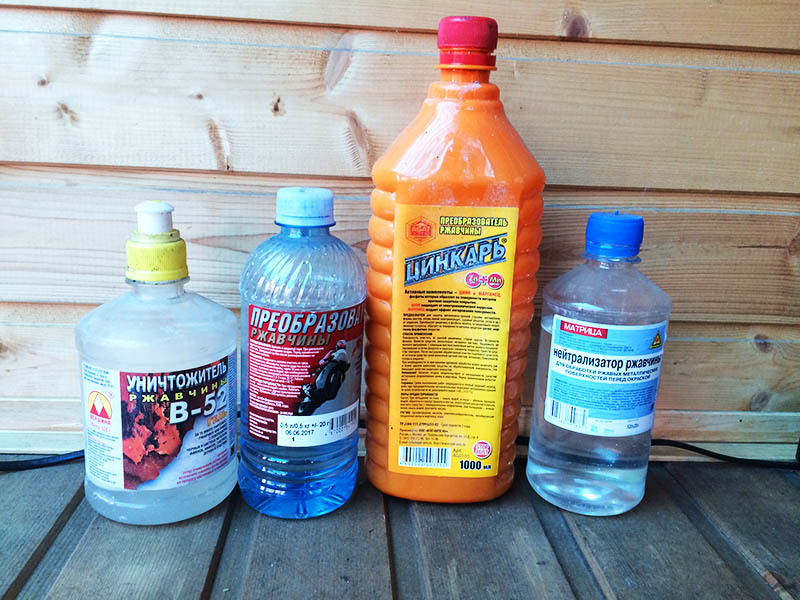
We really hope that the information presented today will be useful to home craftsmen, if necessary, to unscrew the stuck nut. HouseChief editors will be happy to answer all your questions, if any, while reading the article. Just a little is required of you - to state the essence in the comments below. There you can also discuss the effectiveness of this or that composition for removing rust from threads or share your experience in loosening stuck nuts, if the method differs from the ones listed today. And yet - do not forget to rate what you have read. Your feedback is extremely important to us. And finally, we bring to your attention a short, but very informative video on today's topic. Take care of yourself, your loved ones and be healthy.
